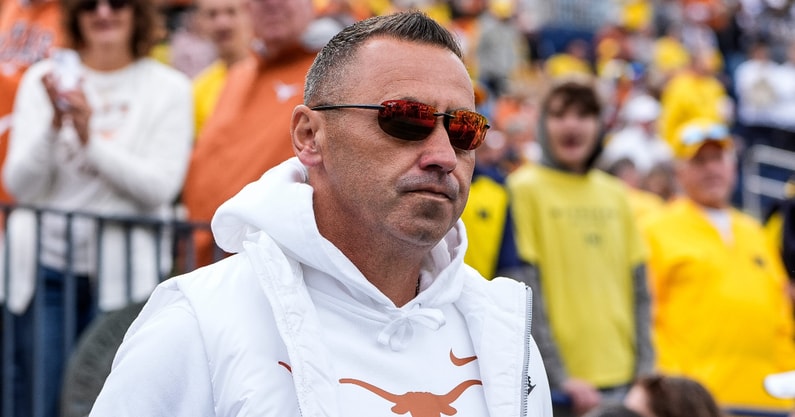Steve Sarkisian’s departure from the Texas Longhorns has sent ripples through the college football landscape. As the head coach, he was tasked with reviving a storied program that has struggled to reclaim its former glory in recent years. Sarkisian, who joined the Longhorns in January 2021, brought a wealth of experience and a reputation for offensive innovation. However, despite initial optimism, his tenure faced challenges that ultimately led to his exit.

When Sarkisian was hired, there was considerable excitement surrounding his potential to reinvigorate Texas football. He had previously demonstrated his coaching acumen as the offensive coordinator at Alabama, where he played a crucial role in developing a dynamic offense that led to national championships. His time in Tuscaloosa was seen as a significant asset, as he was expected to bring a high-powered, modern offensive scheme to Austin.
Initially, Sarkisian’s first season was a mix of promise and disappointment. The Longhorns showcased flashes of brilliance, including a thrilling victory over ranked opponents, but inconsistent performances and defensive struggles hindered their progress. A heartbreaking loss to rival Oklahoma highlighted the team’s lack of resilience, raising questions about Sarkisian’s ability to lead the program to sustained success.
As the 2022 season unfolded, the Longhorns continued to grapple with inconsistency. Despite boasting a roster filled with talent, the team struggled to find its identity, often falling short in critical moments. Sarkisian’s offensive schemes occasionally dazzled but frequently lacked the execution needed to compete at the highest level. The frustrations culminated in a lackluster finish to the season, with fans growing increasingly restless.
The pressure mounted on Sarkisian as the 2023 season approached. Texas football fans have high expectations, given the program’s rich history and resources. The Longhorns had been seeking a return to national prominence, and the growing discontent with Sarkisian’s leadership was palpable. The team’s struggles in conference play further fueled speculation about his future, especially with other high-profile coaching changes occurring around the country.
Ultimately, Sarkisian’s departure was the result of a combination of factors. The inability to secure crucial wins, coupled with the failure to develop a consistent quarterback situation, hindered his ability to create a winning culture. Additionally, the Longhorns’ performance in critical games raised doubts about his coaching philosophy and ability to adjust under pressure.
As he leaves Texas, Sarkisian’s legacy will be a complex one. He introduced some innovative offensive concepts and recruited talented players who could potentially shape the future of the program. However, the lack of tangible success during his tenure will overshadow these contributions.
Looking ahead, the Texas Longhorns face a pivotal moment in their quest for a brighter future. Sarkisian’s exit opens the door for new leadership and potentially a new direction. The program will be looking for a coach who can not only harness the talent available but also foster a winning mentality that has been elusive in recent years. The hope is that the next chapter in Texas football will lead the Longhorns back to the heights of college football prominence, fulfilling the aspirations of a passionate fan base that longs for greatness.
In the competitive landscape of college football, the journey ahead for Texas will be critical in defining its identity and future success.

